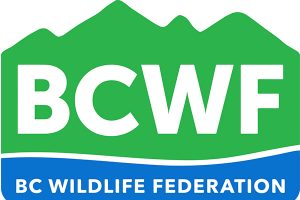Home »

Proposed solar facility a threat to biodiversity: BCWF
 The B.C. Wildlife Federation (BCWF) has serious concerns about a solar energy facility proposed by Enterprise Renewables in the East Kootenay.
The B.C. Wildlife Federation (BCWF) has serious concerns about a solar energy facility proposed by Enterprise Renewables in the East Kootenay.
The area to be studied and potentially rendered uninhabitable to wildlife is staggering at 4,470 hectares, or 44 square kilometres. Forest areas and vast grasslands would be destroyed and blocked out from the sun.
“Specifically, we are concerned about the loss of valuable winter range for elk and deer. This area of the East Kootenay is on migration routes for a variety of waterfowl and endangered species such as Lewis’ woodpeckers and the long-billed curlew, which relies on these lands for nesting trees, along with the insects they feed on. Wildlife in the East Kootenay declined in the late 1990s; the province of B.C. has been completely absent trying to recover them,” BCWF noted in a Dec. 1 media release.
Portions of this application have already been refused by the Lands Branch.
“It seems ridiculous to cover productive forest and grassland in solar panels, especially when it is habitat for so many species,” said BCWF Executive Director Jesse Zeman. “With millions of bare rooftops across the province, this is an inexcusable misuse of a resource.”
“If you want solar on your property, would you put it on the roof, or on top of the vegetable garden?” he asked.
Additionally, Columbia River-Revelstoke MLA Doug Clovechok (BC United) is on record noting he does not support the proposal.
The opportunity for public comment on this file expires December 2.
The following letter from BCWF has been sent to the relevant B.C. cabinet ministers.
Dear Ministers,
“The B.C. Wildlife Federation has serious concerns about the proposed solar energy facility which has been proposed by Enterprise Renewables in Crown Land, File #4406427.
“As concerned as we are about the impacts of climate change and fossil fuel consumption, the downsides of this project far outweigh the benefits. The environmental values of the East Kootenay grasslands are simply too great to allow such a massively disruptive project to be built.
“It would be the greatest irony if a project that purports to have environmental value were allowed to disrupt wildlife at such a huge scale and destroy an existing and growing grassland carbon sink that itself mitigates climate change.
“The area to be studied and potentially rendered uninhabitable to wildlife is staggering at 4,470 hectares, or 44 square kilometres. Forest areas and vast grasslands would be destroyed and blocked out from the sun.
“Specifically, we are concerned about the loss of valuable winter range for elk and deer, along with rangeland for cattle. This area of the East Kootenay is on migration routes for a variety of waterfowl and endangered species such as Lewis’ woodpeckers and the long-billed curlew, which relies on these lands for nesting trees, along with the insects they feed on.
“Some of the parcels requested are on Skookumchuck Prairie Key Biodiversity Area (KBA) – an area recognized internationally as necessary to maintain global biodiversity.
- Twelve breeding territories of at-risk long-billed Curlew are situated on the parcels requested.
- Sixteen nest trees of species-at-risk Lewis’ woodpecker occur on parcels requested. This is the densest breeding colony of Lewis’ woodpecker in Canada.
- Nearly three quarters of the bird species found in the East Kootenay are found in the Skookumchuck Prairie KBA making it the richest bird area per hectare in the region. More than 220 bird species have been documented.
“The Lands Branch has already rejected portions of this request, noting: “The area selected is within an endangered grassland ecosystem which is being actively managed and restored. This ecosystem provides critical habitat for ungulates (primarily elk) and species at risk and is an important cattle-grazing area. The government and organized groups have spent approximately $14 Million dollars on ecosystem restoration in the Rocky Mountain Trench.”
The Land Branch decision should be respected and upheld, stated Jesse Zeman, BCWF Executive Director and David Lewis, BCWF President.
The proposed facility is targeted for an area southeast of Fort Steele and north of Horseshoe Lake, and directly south of Maus Creek Road.
Lead image: Kimberley’s SunMine – situated on 1,100 hectares of reclaimed mining land, has 4,032 solar-cell modules, mounted on 96 solar trackers. e-KNOW file photo
e-KNOW







